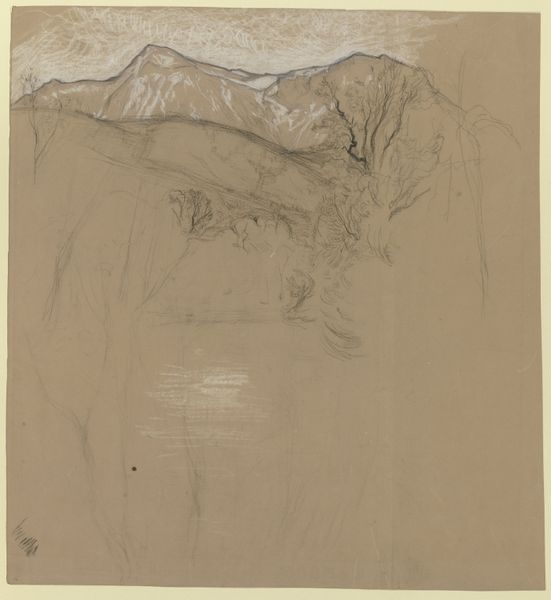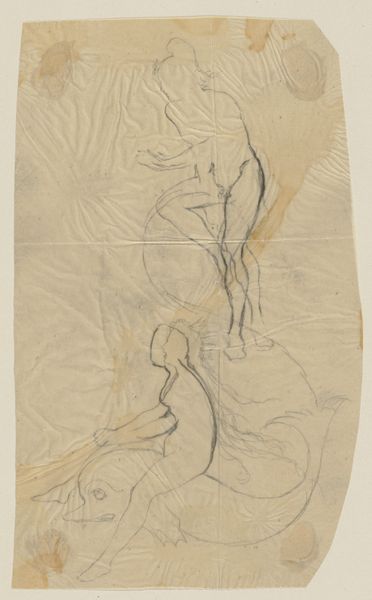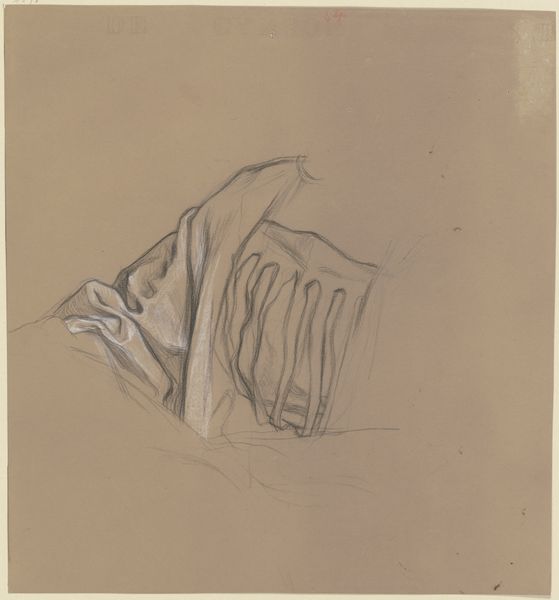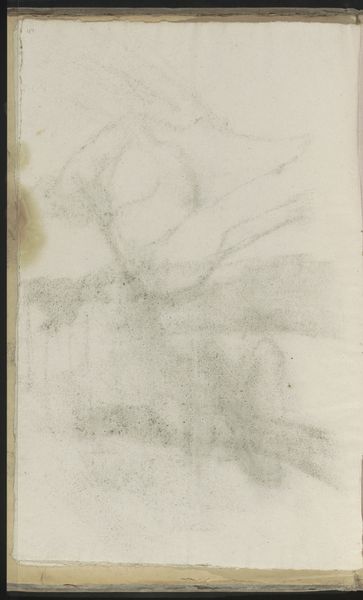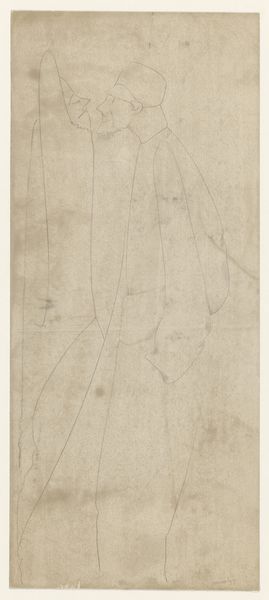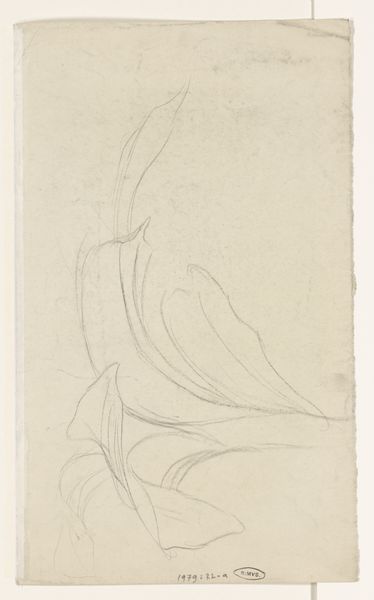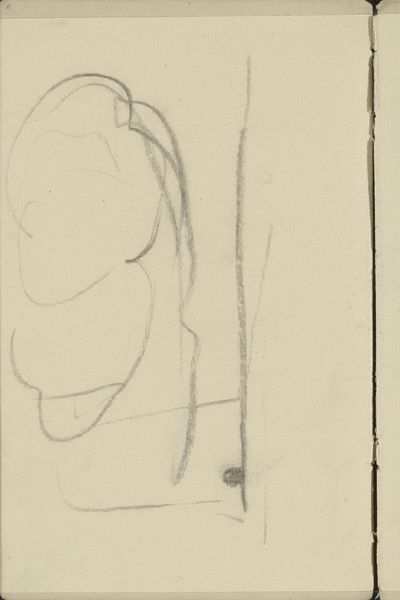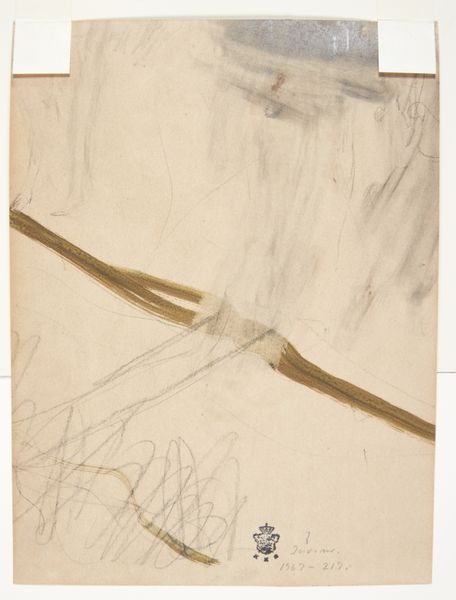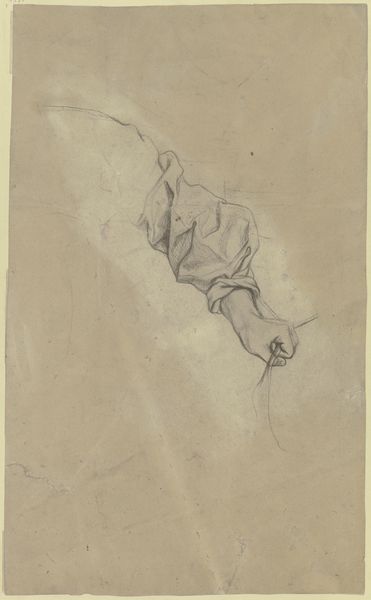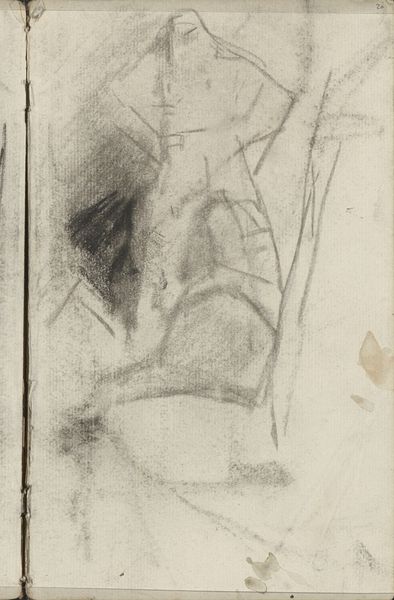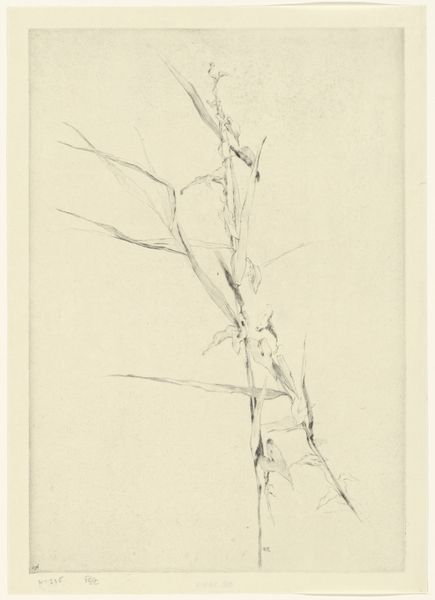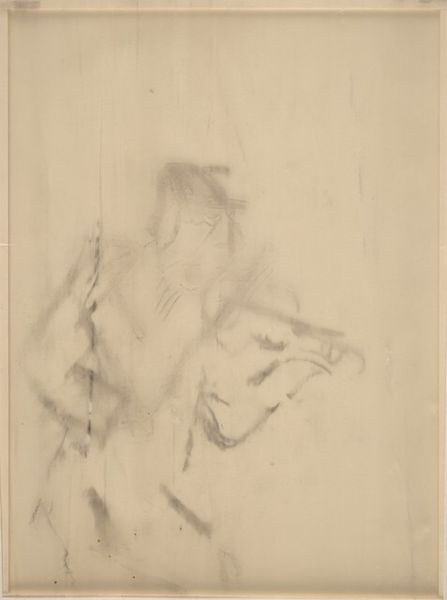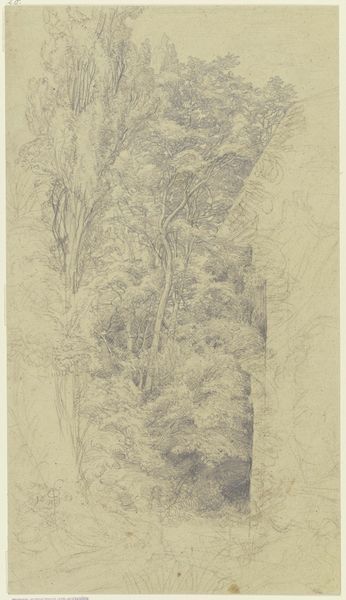
Der Engel aus _Daniel in der Löwengrube_ als männlicher Akt (Fragment) c. 1867
0:00
0:00
drawing, paper, pencil, chalk, graphite
#
drawing
#
etching
#
figuration
#
paper
#
pencil
#
chalk
#
graphite
#
academic-art
Copyright: Public Domain
Curator: Victor Müller's study, dating from around 1867, presents a fascinating glimpse into the artist's process, particularly his work on "The Angel from _Daniel in the Lions' Den_ as a Male Nude (Fragment)." It's executed using graphite, chalk, and pencil on paper. Editor: It’s an intriguing sketch; there’s a delicacy to it. A certain ethereal quality despite the academic style. It feels very much like a study, a fleeting capture of form and gesture. Curator: Absolutely, you can almost see the layers of exploration and correction. Look closely at the musculature suggested with subtle shading, and consider how Müller experiments with the fall of light. Notice the choice of media. Graphite for precision and then chalk and pencil for softness to the angel's flesh. The paper is interesting, its rough surface contributes a textural dimension that contrasts with the smooth modeling of the figure. Editor: I am also struck by how Müller’s representation challenges the conventional ideal of the masculine. Here is an androgynous being depicted in a sacred context. Was he trying to suggest divine otherness or exploring alternative ideas of gender and power during that period? It’s especially interesting in the context of religious narratives, where angels often occupy ambiguous positions within the social hierarchy. Curator: The fragmentary nature adds another layer. We aren’t presented with the finished product. Instead, we’re given access to Müller's investigation. In examining it we gain valuable insights into the working methods employed in the academic art tradition. We see, in its raw state, that these highly finished pieces are always rooted in labor and construction. Editor: And perhaps, in that incompleteness, the potential for the viewer to complete the narrative. To grapple with the questions of gender, religion, and the artistic process, as a participant rather than a passive observer. This resonates even today. Curator: Yes, the sketch then transcends being merely a preparatory study; it invites an ongoing engagement with its ideas and methods. It reminds us how art is often found in the seemingly mundane. Editor: For me, it provokes considerations about the very idea of divinity, as a construct that reflects cultural anxieties and social negotiations around power and identity. Thank you for showing me.
Comments
No comments
Be the first to comment and join the conversation on the ultimate creative platform.
